Promise Pegasus J2 Review: The Smallest High Performance Thunderbolt Drive
by Anand Lal Shimpi on September 2, 2012 1:00 PM ESTPromise was the first to get us a Thunderbolt chassis with the Pegasus R4/R6. Not only was the Pegasus the first shipping Thunderbolt storage chassis, but it continues to be among the fastest on the market. If you've never seen one, the Pegasus R4/R6 is a 4 or 6 bay 3.5" external storage array with built in RAID and Thunderbolt controllers. Promise doesn't ship a chassis without drives, so you get to choose from between 4TB in the lightest configuration (4 x 1TB drives) at $1050 all the way up to 18TB (6 x 3TB) in the beefiest $3000 config. Sequential IO performance is great, generally hitting around 700MB/s for a 6-drive RAID-5 array. There's room for improvement, but running several drives in RAID-0 is typically not the best idea for redundancy.
The biggest issue with the Pegasus (other than cost) is that it doesn't ship with solid state drives. Although the use of 3.5" mechanical hard drives results in good sequential performance and great capacity, random IO performance suffers. After all, even a single SSD tends to have an order of magnitude better random IO performance than a hard drive. For most Thunderbolt use cases (e.g. tossing video/audio/photo work), the Pegasus' array of hard drives is fine. The world is clearly moving towards solid state storage however, and with LaCie offering an SSD version of its Little Big Disk series of Thunderbolt drives Promise had to respond.
The result is this, the Pegasus J2:
The design is extremely unique. While most Thunderbolt enclosures thus far have been home to either 2.5" or 3.5" drives, the Pegasus J2 houses two 6Gbps mSATA SSDs in RAID. I've already demonstrated the sort of performance you can get from RAIDing together two relatively cheap 6Gbps SSDs, and the current crop of mSATA drives can actually equal the performance of their larger 2.5" brethren, so the J2 design makes a lot of sense. The real killer is this: the Pegasus J2 can deliver performance similar to the Pegasus R6, and in many cases it'll outperform it. Here's a shot of the J2 on top of my personal R6 on my desk:

That's the beauty of solid state storage. That little box on top can outperform the big thing beneath it.
Capacity is a problem of course. Promise is only offering the Pegasus J2 in 256GB and 512GB capacities, while you can up to 35x that storage in a maxed out Pegasus R6. I'm less interested in the J2 from a practical standpoint for now, and more intrigued by the form factor and what it could mean for future external Thunderbolt storage. We have the technology now to hit 1TB inside the J2 chassis, and next year that number will grow to 2TB with the move to IMFT's 128Gbit 20nm NAND. The capacity problem goes away over time, but for now it's a definite concern.
Promise also isn't releasing any pricing information today, but rest assured that the Pegasus J2 will be expensive. In our My Book VelociRaptor Duo article I included a chart of the cost-per-GB of many currently available Thunderbolt enclosures:
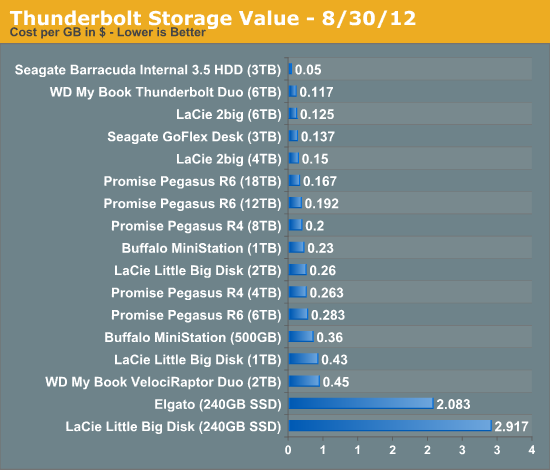
LaCie uses Intel SSDs in its Little Big Disk at $2.917 per GB. It's possible that Promise can do better, we'll have to wait and see closer to official availability if it can however.
The Drive & Bundle
The J2 is subtly styled. Rather than being a rectangle there's a slight wedge taper in the middle of the profile. It sort of looks like my attempts to draw a sportscar in middle school, but better. Build quality and feel are top top notch, better than the Pegasus R-series for sure. The chassis has a solid but not heavy feel to it thanks to material choices. The top cover is a thick piece of aluminum, while the bottom of the chassis is finished in a soft touch plastic. Around back there's a single Thunderbolt port and an optional DC input. The J2 can be operated using bus power or pull from a supplied power adapter. You can switch modes on the fly, you simply get more performance when plugged into the wall. Remember the Thunderbolt spec only allows around 10W to be supplied over the cable itself. Take into account two 6Gbps SSDs (each of which likely draws between 3 - 5W under load), the internal SATA controller, and the power consumption of the Thunderbolt controller + active cable and you're easily beyond 10W. Promise has its own custom SSD and ASMedia SATA controller firmware that allows it to throttle performance when running on Thunderbolt bus power to keep below that 10W maximum. There's no reconfiguring or software changes needed when you switch between operating modes, just plug in the drive's external power and you get better performance. The bulk of the J2's power still comes from the Thunderbolt bus. With the external power adapter plugged in the J2 draws at most 1.1W from it at idle, and up to 2.9W under load - the rest comes over the Thunderbolt cable. A single LED indicator on the back of the drive lets you know what mode you're running in. Green for bus powered (low performance) and blue for external power (high performance):
The J2's optional power brick comes with a set of removable plugs for international use:
The Pegasus J2's bundle also comes with a carrying case. There's no Thunderbolt cable included unfortunately.
The chassis is super easy to get inside, there are three phillips head screws that keep the two pieces together. Two are beneath rubber feet, while the third is in the middle of the base of the chassis. Once removed you can slide the aluminum cover forward and pry the two pieces apart:
There's a small, notebook fan inside the aluminum cover to the J2 (if you are taking one of these things apart be careful when opening the J2 as the fan gets power from the underside of the PCB). The fan never gets too loud but it helps keep the tiny SSDs cool.
The PCB itself is a pretty neat looking design. There are two mSATA SSDs placed side by side:
Thermal pads cover the bottom half of the drives, the top half is cooled by the J2's fan. The drives use Phison's PS3108 6Gbps SATA SSD controller, typically used in entry level, value SSDs. Sequential performance is good, but random write speed isn't and in a heavily fragmented state performance can drop significantly. I suspect Promise chose the Phison solution because of the low cost, low power profile and the ability to modify firmware. The only problem is I'm not sure if I'd be too comfortable paying for a premium product using distinctly value SSD controllers.
SATA duties are handled by ASMedia's ASM1061 PCIe 2.0 x1 to 6Gbps SATA controller. Like most Thunderbolt enclosures that rely on a RAID array of drives, the Pegasus J2 uses software to handle all striping/mirroring duties. In the case of the J2 under OS X, you'll be using Apple's Disk Utility to switch between RAID-0 and RAID-1.
Thunderbolt support is provided by an Intel Port Ridge controller (the tiny IC labeled L2201). Port Ridge is a Thunderbolt end point controller, meaning it only has a single Thunderbolt input and can't pass PCIe/DP to any other devices down the chain - it terminates the Thunderbolt chain. Port Ridge is lower cost Thunderbolt controller often used for these types of tiny, bus powered devices. Since you can only have one bus powered device per Thunderbolt chain, it makes sense to use a controller that can only operate as an end point.


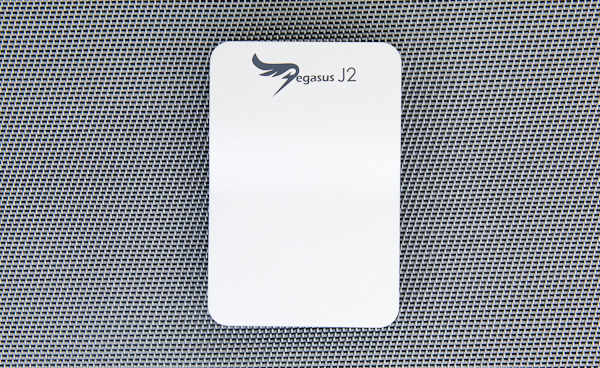





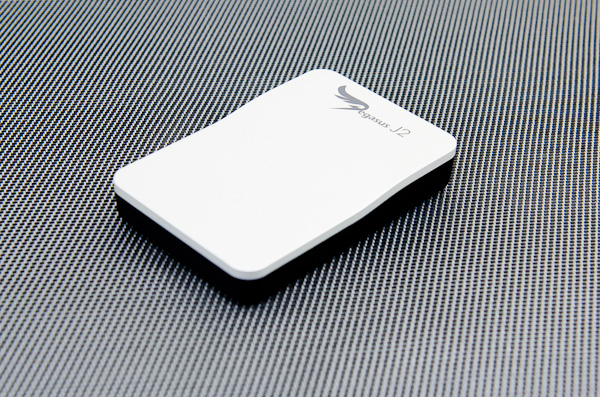


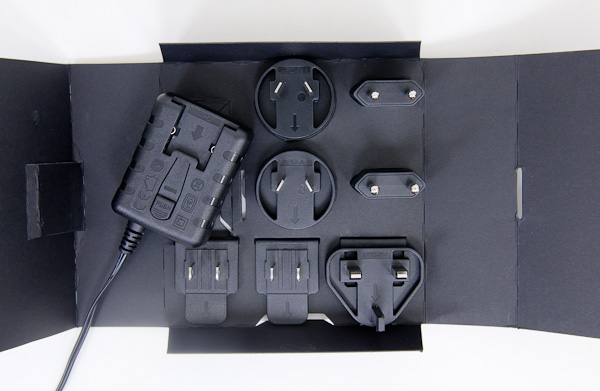
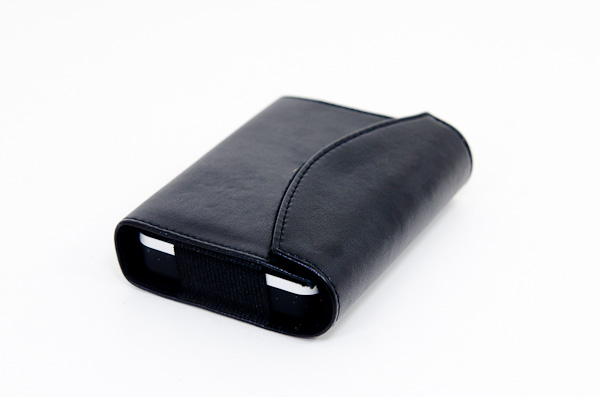
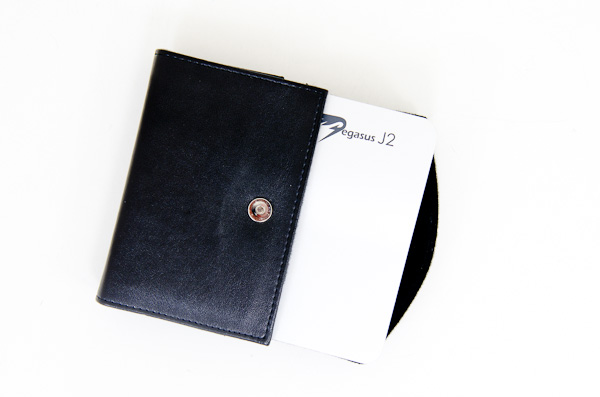
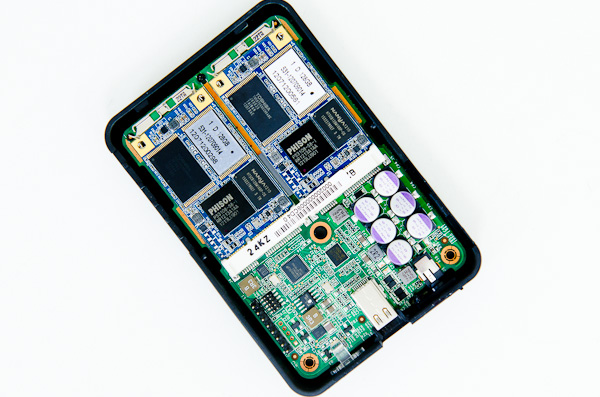

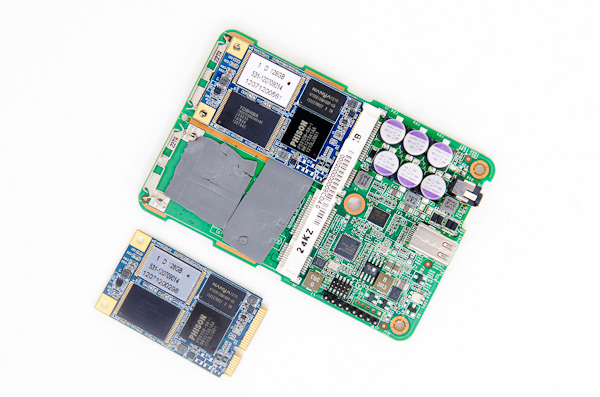








24 Comments
View All Comments
nealibob - Sunday, September 2, 2012 - link
I'll take an empty one for $100ammar.m - Sunday, September 2, 2012 - link
it's ridiculous how insane the prices on all these thunderbolt drives are. why can't they make a regular 320GB/500GB external drive using thunderbolt and give us blazing speeds for 150$? because if they can't do that then this technology is next to useless. Show me how many people would prefer to purchase a 8TB drive over a regular 500GB oneA macbook(where thunderbolt is commonly found) is a consumer based laptop, NOT something you'd expect a budding business to purchase for its employees. so why do drives that cost more than the freakin laptop itself continue to popup? who buys these? I would love to see some sales figures on this.
Zak - Sunday, September 2, 2012 - link
The prices indeed need to come down or TB will be a failure. But I hope this won't be another FireWire 800 since Intel is behind this. Once the interface is on every OEM PC and every mobo the tech ought to become affordable.dsumanik - Monday, September 3, 2012 - link
Fail Fail FailFail 1: Two Cables
Intel created thunderbolt to provide a high bandwidth link for display, peripherals, and storage on a single cable. Why create a product which defeats the intended design spec to begin with? Management should have caught this one, its simply a facepalm, find a SSD that can work in the power envelope and design a passive chassis that doesnt require a fan?
Fail 2: Crap controller in a shiny box.
Two junk SSD in raid 0. What could possibly go wrong?
Nuff Said.
Fail 3 : Unseemly, greedy and outrageous price markup.
Yet another company trying to cash in on the Apple design mentality, make it metal, shiny and well constructed...fill it with the same generic parts as everyone else and then up the price tag 250%.\
Where The *uck is my plain jane, sub 50$ empty and BUS powered external aluminum TB chassis.
Please, nobody buy this...teach them a costly lesson.
inplainview - Sunday, September 2, 2012 - link
I can afford it easily but I won't. The price is crazy,jwcalla - Sunday, September 2, 2012 - link
Throw me in the ring as a bit of a doubter myself. If it's going to be pushed as primarily an interface for peripherals, I have to say "meh" for now, considering the cost. Just use eSATA for something like external disks.Give me something like 10 GbE over TB, and my ears perk up. That seems like something of value. I don't think we'll see Intel go there though.
The whole spec seems kinda proprietary and locked down.
Pneumothorax - Monday, September 3, 2012 - link
Agreed, Intel/Apple's decisions are going to either kill this standard or relegate it to a firewire niche. Their decision to restrict to Apple use only for the 1st year along with their stupid nanny policy of 'You have to certify with us first before we'll let you release it' have really slowed adoption down. Latest dumb move is when they didn't allow mobo manufacturers to devise a discrete GPU thunderbolt pass-through interface.Samus - Tuesday, September 4, 2012 - link
what's ridiculous is all the retired baby boomers blowing their social security income and pensions on this overpriced tech to match their overpriced apple craptech6 - Sunday, September 2, 2012 - link
The problem with the J2 is that a normal SSD for less than $1/Gb is plenty fast enough for even the most I/O intensive work. The marginal value of this Thunderbolt/RAID-0 setup is questionable - particularly if is comes in at $3/Gb.MadMan007 - Sunday, September 2, 2012 - link
"Two are beneath two of the rubber feat"Pesky spellcheck!